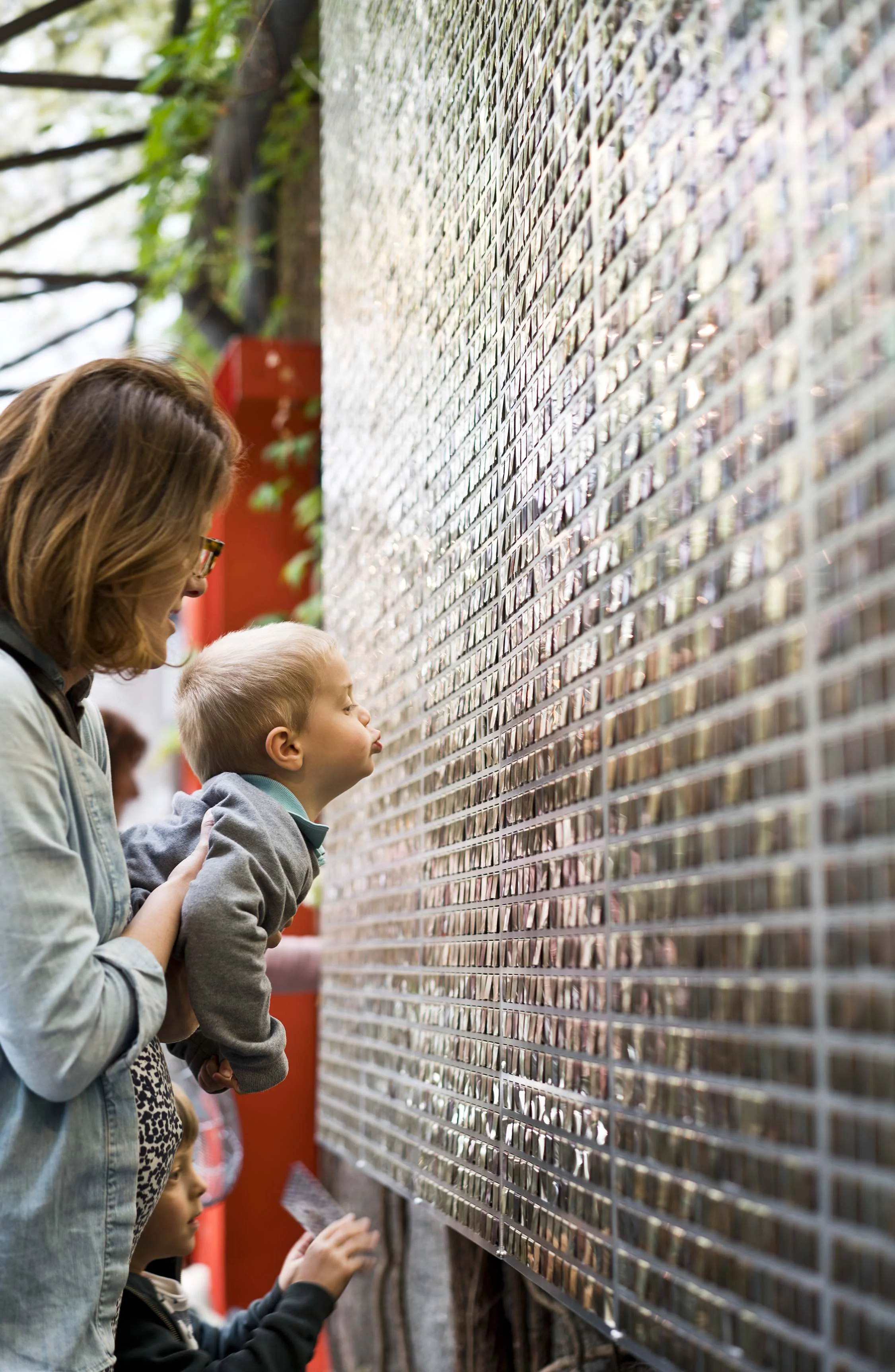Surfaces born from the union of multiple disciplines and techniques, by Orla Lawn
At MaterialDriven, we find ourselves drawn to two kinds of design–one which generates never-seen-before products, and another which invents new methods and techniques of working with familiar materials–forever broadening the vocabulary of processes available to all designers.
Most materially-innovative design will possess one of these characteristics.
In the case of Surface Designer Orla Lawn, one sees both traits in her work, with the unique and inventive processes developed by her taking center stage.
A new type of Surface
Orla's 3D textiles–seen as hanging, mixed-media panels–can serve as visual screens, sculpture, or simply as dynamic art. As a new type of design entity and surface altogether, one can assign multiple functions to these works or refrain from assigning any function at all.
Orla Lawn's Blue Twill. Image by James Barnett
More significantly, however, Orla’s works seem to bring together multiple disciplines, and the techniques that go with them. In her 3-D Textiles, the brittle plaster of the architect is woven together with the yarn of a textile designer. Hard and soft interweave, and a new material and surface are generated, with many more possibilities created as a result this fusion.
A union of disciplines and techniques
In knowing Orla’s background, lies the key to understanding this union of disciplines and media in her work. After training as an architect first, in Ireland, Orla went on to study Textile Design at Central Saint Martins (CSM), at the University of the Arts London, before starting a Master’s Degree in Mixed Media Textile Design earlier this year at the Royal College of Art.
During her second year spent studying Textile design at Central Saint Martins; having learned the basics of weaving and working on the loom, Orla began to experiment with alternate materials in her projects. By her final year, she was working with a combination of hard and soft materials, designing while making extensively, and spending less time on the loom. It was the connection between weaves and structure that fascinated her, rather than printed textile surfaces.
Orla's work weaves together hard and soft materials–seen here is a stepped weave of wool and plaster. Image by Amin Musa
In search of this union of weaves, structure, soft and hard material, Lawn sought out a material she had worked with in architecture–Plaster. It was easier to work with than concrete, or wood, and required no specialized equipment. “It was easy to wrap blocks of foam in plaster, watch them dry quickly, and create a hard material whose blocks I could work with. I was impatient to build things and test them rapidly, in the moment, and Plaster offered that. In many ways, making these blocks of plaster was the polar opposite of the painstaking weaving process” Orla says.
Next, Orla began to integrate these blocks of plaster with the weave that she was familiar with. After struggling with this complex integration, and through trial and error, she determined how yarn could be pulled through something hard. She perfected her self-generated processes and understood how to express and communicate this new surface and method.
Silk and concrete are united in this modular, and multi-functional surface by Orla Lawn.
Ahead
These surfaces–Orla's 3D Textiles–were recently showcased at the Brain Waves exhibit at Central Saint Martins's Lethaby Gallery, and received incredible feedback.
Orla Lawn's work, seen at the recently held Brain Waves exhibit, at the Lethaby Gallery
Having arrived at a surface that looks and feels great, Orla’s goal is now to test its viability as a replicable product and develop it further in that direction. She is also keen to create evolved versions of these surfaces that will be more durable and light. These qualities will enable them to serve well in public spaces, at large scales, and even clad facades–a future Orla envisions and is working towards.
As this development continues, there is no doubt that Orla's integration of hard and soft materials and interdisciplinary techniques offers an impressive new vocabulary for us all to appreciate and employ. As a dynamic, modular surface with both hard and soft qualities, her surface design also offers many functional possibilities. We will continue to follow Orla's work and look forward to watching its evolution!
For more information on Orla's work, click here.
To read other features in the Surface Innovation Series, click here.











